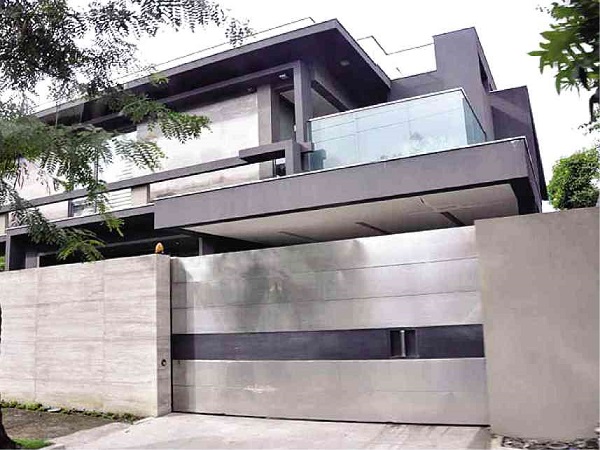
ONE OF the properties on Mahogany Street, Dasmariñas Village, Makati City, believed to be owned by Janet Lim-Napoles. Photo by Joseph Agcaoili
What happens to ill-gotten real estate properties of suspected criminals after these are seized by the government? To be more specific, what happens to the alleged houses and lots and condominium units of persons of interest like Janet Lim-Napoles, who has been accused of serious illegal detention and of being the mastermind of the P10-billion pork barrel scam?
If you ask property experts, they would say the prospects for these seized properties wouldn’t fare any better than its notorious owner.
Enrique M. Soriano III, Ateneo program director for real estate and senior adviser for Wong+Bernstein Business Advisory, explains: “Governments of developing economies are notorious in managing seized assets. The Philippines is no exception. For some high-profile assets that were seized in the past, especially homes in plush subdivisions and all things considered equal, I estimate a significant 30- to 50-percent drop in real estate values. The new owners will stand to benefit from this transaction. As they fix and flip the asset, margins will be significant. The key really in post forfeitures is asset management.”
Soriano adds: “The government’s definition of asset management is (hiring) a caretaker or a security guard, which is a big mistake. As assets age and are not maintained, they deteriorate.”
Effective asset management
Julius Guevara, Colliers International associate director for advisory services and head of consultancy and research, explains that “in order for the government to recover as much value from these properties, the asset management should be effective. Seized properties should continue to be maintained, otherwise the physical condition will deteriorate and the government will not actually benefit from the confiscated properties as much as it could have.”
Soriano defines asset management as “a systematic process which allows for the maintenance, upgrading and operation of our physical assets in a cost-effective manner. It’s both strategic and proactive, and offers a long-term and comprehensive view of infrastructure performance and cost.”
Guevara points out, however, that “there is no scientific data on the effect of sequestration on the values of properties.
“But as we saw over the past decades, the properties that were put under government control have deteriorated. Since these properties would be put under litigation which, unfortunately, takes years in the Philippines, there is no choice but to put the properties under lock and key and keep them unutilized until the cases are resolved. In short, if a property’s utility becomes limited or hindered for whatever reason, may it be natural, physical or legal, then its value would also be constrained,” he adds.
Guevara says: “In this case, since the (Napoles) properties may possibly be seized but the cases have not yet been resolved, they cannot be leased out or encumbered; no economic value can be derived at that point. However, once the cases are resolved one way or the other and true ownership is established, then the market value of the properties will again prevail.
“(In the present situation), the market value of the properties will be constrained even though they haven’t been confiscated. Buyers will not pay market value for properties they think have a possibility of being seized by the government in the future, unless the cases have been cleared and the property ownership is truly established,” Guevara adds.
Legal procedure
Soriano says that the forfeiture sanction is a legal procedure resulting in the transfer of the ownership of property to the government.
Soriano adds: “As to whether the property values of these alleged Napoles properties will rise or plummet after the government seizes them lies on three crucial elements:
• The primacy of the site where the assets are located;
•.Timing of the sale will depend on market conditions;
• The current and future state of the asset, whether they be condominium or houses.”

